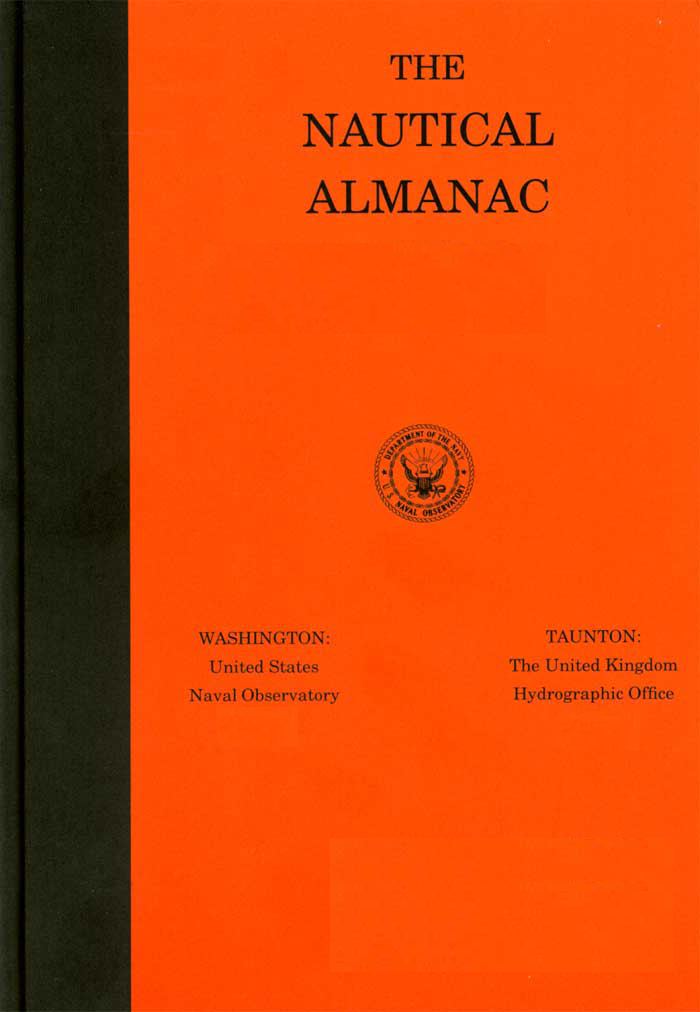 | ||
Similar Nautical almanac, Astronomical Almanac, Bowditch's American Practical, Longitude: The True Story of a, Explanatory Supplement to the Astr | ||
Ponce muir s suns or the nautical almanac tale
The Nautical Almanac has been the familiar name for a series of official British almanacs published under various titles since the first issue of The Nautical Almanac and Astronomical Ephemeris, for 1767: this was the first nautical almanac ever to contain data dedicated to the convenient determination of longitude at sea. It was originally published from the Royal Greenwich Observatory in England. A detailed account of how the publication was produced in its earliest years has been published by the National Maritime Museum.
Contents
- Ponce muir s suns or the nautical almanac tale
- Publication history
- 17671959
- 19601980
- 1981 to date
- The British Nautical Almanac in the USA
- References
Since 1958 (with the issue for the year 1960), Her Majesty's Nautical Almanac Office and the US Naval Observatory have jointly published a unified Nautical Almanac, for use by the navies of both countries.
Publication history
The changing names and contents of related titles in the series are summarised as follows. (The issue years mentioned below are those for which the data in the relevant issue were calculated—and the issues were in practice published in advance of the year for which they were calculated, at different periods of history, anything from 1 to 5 years in advance).
(For many years, official nautical almanacs and astronomical ephemerides in the UK and the USA had a linked history, and they became merged in both titles and contents in 1981.)
In the UK, the official publications have been:
1767–1959
The main distinctive feature of the inaugural issue for 1767 was the tabulation of lunar distances as a tool to facilitate the determination of longitude at sea from observations of the Moon. Within a few years, the publishers of almanacs of other countries began to adopt the practice of tabulating lunar distances. Lunar distances continued to be published in the UK official almanacs until 1906, by which time their use had declined in practice. For some time thereafter, in the issues for the years 1907–1919, examples of how to calculate them were given instead.
Time: The issues for 1767 to 1833 gave their ephemeris tabulations in terms of Greenwich apparent (not mean) time. This was on the grounds that an important class of user was the 'Mariner', and that 'apparent Time' was "the same which he will obtain by the Altitudes of the Sun or Stars in the Manner hereafter prescribed". Mean time at Greenwich (i.e. mean solar time) was adopted as from the issue for 1834 and continued to 1959. Until the issue for 1924, the time argument for Greenwich Mean Time was counted from 0h starting at Greenwich mean noon (on the civil day with the same number), and starting with the issue for 1925 the commencement point of the time argument was changed so that 0h became midnight at the beginning of the civil day with the relevant number, to coincide for the future with the civil reckoning.
During parts of the period 1767–1959, separate subsidiary titles dedicated to navigation were also published:
1960–1980
Time: A major change introduced with the 1960 issue of "The Astronomical Ephemeris" was the use of ephemeris time in place of mean solar time for the major ephemeris tabulations. But the Nautical Almanac, now continuing as a separate publication addressed largely to navigators, continued to give tabulations based on mean solar time (UT).
1981 to date
The British Nautical Almanac in the USA
In the USA, an official (and initially separate) series of ephemeris publications began with the issue for 1855 as "The American Ephemeris and Nautical Almanac"; but before that, the British "Nautical Almanac" was commonly used on American ships and in the United States – sometimes in the form of an independently printed American 'impression' instead.
